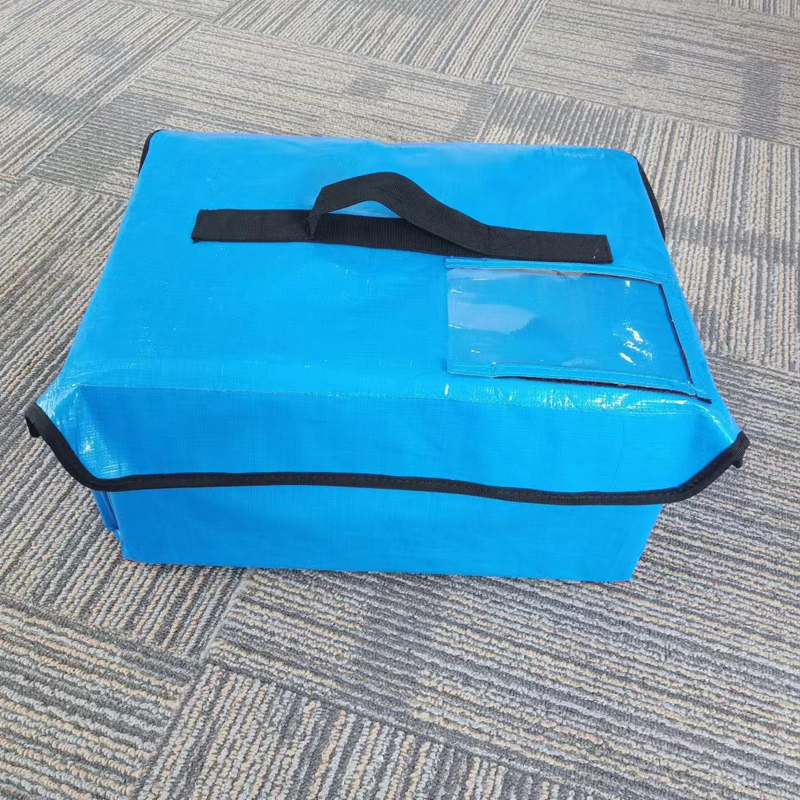This Year is a Big Year for the Logistics Industry, with Fierce Competition and Battle Flags Flying:
In June, J&T Express submitted its listing documents on the Hong Kong Stock Exchange; In August, SF Express (002352.SZ) applied for a secondary listing on the Hong Kong Stock Exchange; In September, Cainiao also submitted its listing documents on the Hong Kong Stock Exchange.
Logistics giants are gearing up, seemingly ready to start a new round of warfare.
There is a significant backdrop to this: since the pandemic restrictions were lifted in the first half of the year, the price per package for all courier companies has decreased. Shentong Express (002468.SZ), which saw a relatively large decline, dropped the price per package by 8.2% to 2.35 yuan, marking the start of a new round of price wars.
Even JD.com (JD.O, 09618.HK), which has always positioned itself as a high-end service, lowered its free shipping threshold from 99 yuan to 59 yuan for the first time.
Is this round of competition just a replay of the previous price wars?
On the surface, it is a price war, but in reality, it is global competition.
Discussing China’s logistics industry inevitably involves e-commerce.
Currently, e-commerce packages account for more than 80% of express package volumes, and the growth rate of e-commerce retail sales is significantly faster than that of total retail sales.
Behind every rising e-commerce company in China, there is a representative logistics company, such as Alibaba’s (BABA.N, 09988.HK) Cainiao, JD.com’s JD Logistics (02618.HK), and Pinduoduo’s (PDD.O) J&T Express.
In terms of business models, the three e-commerce logistics companies differ greatly: JD Logistics operates directly, Cainiao primarily functions as a logistics platform, and J&T Express uses a franchise model.
Although Cainiao once claimed it did not engage in courier services, from Daniao to Cainiao Direct Delivery and now Cainiao Express, the role of courier services within Cainiao has become increasingly important.
Currently, Cainiao Express positions itself as a quality courier service, helping Alibaba’s direct business (Tmall Supermarket) achieve next-day delivery services, a positioning very similar to JD Logistics.
Another major difference among the three companies is their overseas business.
Cainiao generates 47% of its revenue from international logistics, including Chinese goods being exported and overseas goods being imported. The company is the largest cross-border e-commerce logistics company in the world.
Cainiao also derives 46% of its revenue from domestic logistics, with a revenue of 36 billion yuan in the 2022 fiscal year (Cainiao’s fiscal year ends in March), ranking third among domestic quality e-commerce logistics companies.
J&T Express originated in Southeast Asia, established in 2015, and entered the Chinese market in 2020 despite many doubters. In just three years, it reached a scale of 28.3 billion yuan in the Chinese market, with a market share of 10.9% by package volume, ranking sixth.
Last year, J&T Express generated a revenue of 16.4 billion yuan from Southeast Asia, accounting for 33% of its total revenue.
Although JD Logistics has some overseas presence, it mainly operates in China.
Not only e-commerce logistics, but SF Express also entered the Southeast Asian market in 2021 through the acquisition of Kerry Logistics. Currently, it is a leader among comprehensive logistics companies in Southeast Asia. The primary purpose of this round of financing on the Hong Kong Stock Exchange is to enhance international and cross-border logistics capabilities.
It is evident that companies seeking financing in this round have a certain scale of overseas business. The price war is only a facade; the essence has already escalated to global competition.
Competition in overall scale and profitability.
In the context of global competition, the Chinese market is undoubtedly important, but companies should not be confined to the gains and losses of a single city. Ultimately, it all comes down to competition in overall scale and profitability.
Among the three e-commerce logistics companies, JD Logistics remains the largest, with a revenue of 137.4 billion yuan last year, followed by Cainiao’s 77.8 billion yuan in the 2022 fiscal year, and J&T Express’s 50.1 billion yuan in 2022.
Both JD Logistics and J&T Express have made significant acquisitions in recent years.
JD Logistics acquired Kuayue Express in August 2020 and Deppon Logistics (603056.SH) in July last year.
J&T Express acquired entities in Southeast Asia from June to August 2021, Best Express in December 2021, and Fengwang Express in May this year, the latter being SF Express’s franchise courier business.
In terms of organic growth alone, Cainiao has surpassed JD Logistics this year, with JD Logistics’ growth rate continuing to decline.
Since Cainiao’s fiscal year is not a calendar year, using data from the first half of this year, Cainiao’s organic growth rate is 24.7%, still much faster than JD Logistics’ 5.9%.
J&T Express, which entered the domestic market relatively late, has seen fluctuating growth rates in its early stages, with an organic growth rate of 28.2% in the first half of this year (in RMB terms).
In terms of profitability, Cainiao’s gross margin is higher than JD Logistics, and its adjusted operating profit margin has shown a very clear upward trend, achieving profitability in the first quarter of the 2023 fiscal year, while JD Logistics is still at a loss.
J&T Express’s gross margin only turned positive in the first half of this year, with a significant overall loss, with an adjusted operating profit margin of -19.9% last year.
The once-recognized top student JD Logistics does not have such good financial data.
JD Logistics: Succeeding Because of JD, Struggling Because of JD
Liu Qiangdong once said, “In the future, there might be only two courier companies surviving in the domestic logistics industry, one is JD, and the other is SF Express.”
This statement is only half correct.
At that time, Alibaba did not engage in courier services, and companies like SF Express and the three Tongdachang were not competitors for JD or SF Express. However, Alibaba’s self-operated scale grew larger, and Pinduoduo also emerged.
As e-commerce companies reach a certain level of development, they must strengthen control over the logistics segment. Well-managed logistics can reduce costs, improve service quality, and promote business development, thereby feeding back more orders.
From this perspective, it is unlikely that the four major e-commerce giants—JD, Alibaba, Pinduoduo, and Douyin—will help each other’s logistics businesses grow.
JD Logistics developed with the support of JD. Last year, 74% of JD’s total fulfillment costs were contributed to JD Logistics, a high proportion.
However, due to its own growth difficulties, JD can no longer provide more support to JD Logistics.
Last year, JD’s electronic products and home appliances grew by 4.7%, and daily necessities grew by 8.1%, both hitting multi-year lows.
In the first half of this year, the growth rate of electronic products and home appliances rebounded to 5.5%, while daily necessities saw negative growth, with a combined decrease of 0.2% year-on-year.
In the past year and the first half of this year, JD Logistics’ revenue from JD grew by 5.9% and decreased by 2.4%, respectively.
From the perspective of economies of scale, JD Logistics must expand more external customers.
JD Logistics categorizes its customers into three types: JD Group, external integrated supply chain customers, and other external customers.
The main difference between the latter two is that the integrated supply chain offers full-chain services with more pricing leverage, while the company provides standardized products such as courier and freight to other external customers, where it’s a matter of getting what you pay for.
Since 2019, the growth rate of other external customers has far outpaced that of external integrated supply chain customers, indicating that the company’s efforts to expand the latter have not been very successful.
Moreover, platforms like Douyin and Kuaishou belong to “other external customers,” meaning JD Logistics only provides them with standardized products and competes with SF Express, Tongdachang, and others on the same platform.
Last July, the acquisition of Deppon Logistics brought in more other customers.
As a result, despite being the second-largest domestic logistics company, JD Logistics still has a significant gross margin gap with SF Express and cannot achieve stable profitability like SF Express.
Liu Qiangdong clearly underestimated the influence of e-commerce on logistics companies. JD Logistics has not escaped the positioning of e-commerce logistics. It can be said that it succeeds because of JD and struggles because of JD.
Going Global: J&T Express and Cainiao
As mentioned earlier, the main theme of this round of courier company competition is going global.
This is not only because overseas markets offer significant growth potential but also because the profitability data in these markets are better.
Taking J&T Express as an example, the price per piece in the Southeast Asian market is nearly three times that of China, with a gross margin of up to 20% last year, higher than SF Express. This is the confidence behind J&T’s return to the domestic market.
Although Cainiao has not disclosed the gross margin and revenue per package by business segment, calculations show that the average revenue per package for its international logistics business exceeded 25 yuan in the first quarter of the 2023 fiscal year, and it has been increasing year by year. In contrast, the average revenue per order for domestic logistics is less than 15 yuan and is gradually declining.
The imagination space for cross-border business is indeed greater.
In terms of package volume, Cainiao is the largest cross-border e-commerce logistics company globally, ranking first in both Chinese export and import e-commerce logistics. Cainiao also has the largest cross-border e-commerce warehouse network worldwide.
Three Chinese Companies in the Top Ten: The Era of Global Competition Has Arrived
Logistics is an ancient industry, evolving from early road and water transport to later rail and air transport, and more recently into same-city instant delivery and cold chain transportation.
Overall, Chinese companies are latecomers in this industry. Among the world’s top ten logistics companies, apart from Chinese companies, all are headquartered in developed countries like the US, Germany, Japan, and France.
The three Chinese companies in the top ten are SF Express (fourth), JD Logistics (fifth), and Cainiao (tenth). Considering the rapid development of China’s e-commerce industry and the still low concentration in the logistics industry, Chinese companies still have great potential.
This is likely why J&T Express insists on returning to the Chinese market.
With significant scale achieved, the growth of overseas e-commerce, and the export of Chinese goods, global competition has become the main theme of the new round of competition.
Following this wave of e-commerce development, China has seen the rise of several logistics companies, such as JD Logistics, Cainiao, and J&T Express.
Since the beginning of this year, a new round of courier price wars has started, with logistics companies applying for stock market financing one after another.
However, delving deeper, the price war is only a facade; the main purpose of financing is to go global, which is the main theme of this round of competition.
Due to Alibaba’s shift to self-operation and the rise of Pinduoduo, these companies have increasingly focused on controlling the logistics segment. Liu Qiangdong’s prediction that there would only be two logistics companies left in China has been broken.
The rapid rise of Douyin e-commerce has further added variables to the logistics industry.
In this process of change, JD Logistics, which once had an early advantage, has been constrained by its parent company’s slow growth and competition from SF Express and others, resulting in slowing growth and unstable profitability.
Cainiao and J&T Express, on the other hand, have benefited from the large ecosystems of their respective companies and have rapidly developed overseas businesses, showing that Chinese logistics companies still have great potential.






.jpg)













